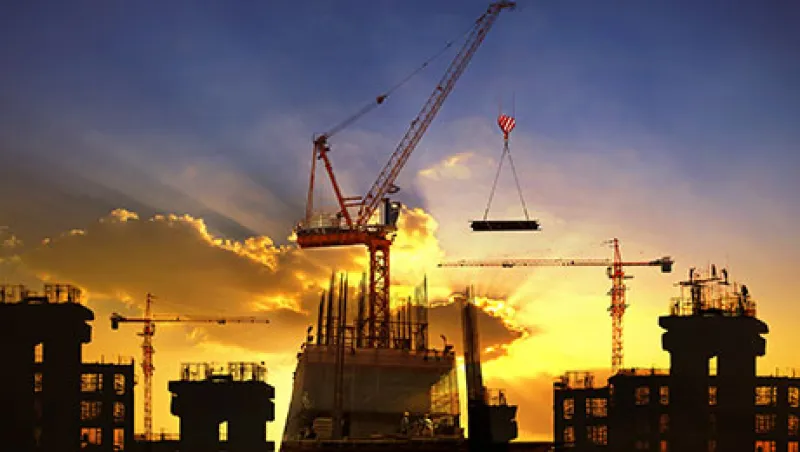Almost a decade after the global financial crisis, the economy remains vulnerable. In its most recent World Economic Outlook, the International Monetary Fund declared that the “global recovery continues, but at an ever-slowing and increasingly fragile pace.”
Central banks have done a lot of heavy lifting since the crisis, but they cannot be the only game in town. It is time to pass the baton to fiscal policy, especially in the current interest rate environment. The time for fiscal policy is right, because there would be no crowding-out effects, which are a concern of academics and policymakers alike in more normal interest rate environments.
One potential major tool to kick-start higher, more sustainable economic growth is investment in infrastructure. The world needs infrastructure investment of more than $3 trillion a year through 2030 to maintain historical growth rates, according to the McKinsey Global Institute.
Following the U.N.’s Financing for Development conference in Addis Ababa in July 2015, at which global policymakers agreed to collaborate on solving this vexing infrastructure finance gap, global financial leaders gathered at the first annual Global Infrastructure Forum during last month’s IMF–World Bank spring meetings in Washington to collectively address closing the infrastructure supply-demand gap. I believe three steps need to be taken to move this agenda forward.
First, the dialogue on infrastructure finance frequently focuses on leveraging the balance sheets of multilateral development banks (MDBs) to “crowd in” the glut of savings in the private sector, notably in pension funds, insurance companies and asset management companies. These investors are constrained, however, by their allowable allocations to alternative assets with higher risks — so-called greenfield risk — such as infrastructure investments. These institutions’ allocations to infrastructure are small compared with the amounts needed. The bulk of these large pools of money require bankable, investment-grade projects. Expectations are that MDBs will guarantee, or credit-enhance, these infrastructure projects to make them investment-grade.
In my view, the dialogue needs to move away from asking MDBs to de-risk infrastructure projects, given their other priorities and, more important, their limited capital. Instead, we need to look toward new sources of de-risking such as reinsurers, including perhaps a structure along the lines of Lloyd’s of London that can syndicate greenfield risk across reinsurers. Reinsurers, accustomed to taking tail risk, can provide the enhancement necessary to de-risk infrastructure projects and crowd-in the investment-grade investors.
Second, the market failure is not a lack of financing; it is a lack of well-structured infrastructure projects and a lack of a pipeline. Here is where the MDBs can play a unique value-added role. Through capacity building, technical assistance and advice, MDBs can help countries create a pipeline of well-structured projects that follow proper procurement procedures and adhere to environmental and social safeguards. By overseeing and helping manage projects, MDBs can help mitigate fraud and corruption. Getting all of this right reduces the greenfield risks investors are unwilling to take. Thus, MDBs can de-risk projects not through financial muscle but by providing their advice and oversight. Their special relationships with governments make them uniquely well positioned to play this invaluable role.
Third, there needs to be a hub or an exchange to manage the flow of infrastructure projects in the pipeline. The hub can facilitate an auctionlike process by which contractors respond to RFPs, procurement processes are overseen, and credit providers bid for financing projects.
Creating a hub will not only bring key information across all the players into one repository, but it will also help ensure best execution for a government with both sides of an infrastructure project — with the builders and contractors and with those providing the financing — in the most efficient way. Moreover, creating a hub or exchange can lead to common standards, create efficiencies, bring projects online more quickly and lower overall costs.
Infrastructure needs are well documented, and it is time to balance the role of fiscal policy with monetary policy to increase economic growth. Developed economies’ needs are well understood. Less understood is the enormous impact infrastructure development in emerging economies can have on global macroeconomic growth. Developing economies account for 57 percent of global GDP on a purchasing power parity basis; in 2015 they accounted for 70 percent of global economic growth. One needs only to look at China’s remarkable development over the past 30 years and its contribution to global growth to see the potential.
Getting the supply and demand for infrastructure right is the future global growth engine. It is time to introduce a new paradigm for closing the global infrastructure gap.
Madelyn Antoncic, former vice president and treasurer of the World Bank, is the New York–based executive director of institutional investment solutions at Principal Global Investors.






